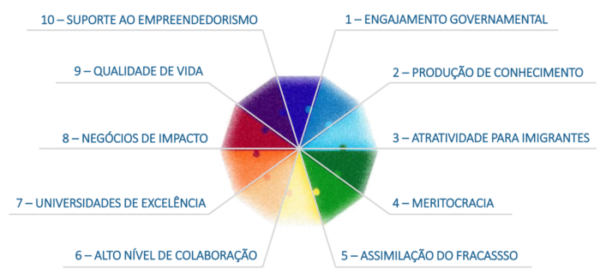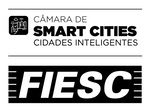The state breathes innovation and entrepreneurship in the daily life of its business, reaping fruits with large technological-based companies emerging in the region.
[12.JAN.2021]

By Thiago Lobão, founder and CEO of Catarina Capital.
For the catarinenses themselves, the report about the region’s exponential growth and disruptive potential tends to sound obvious. There are countless signs that show the local transformation: an increasingly considerable volume of startups with national / international recognition, new buildings for technology companies, a huge volume of workers, from other locations, coming to Santa Catarina to undertake and / or act in the development of technology.
However, I was surprised by a curious question in one of my first conversations with one of the leaders in the ecosystem: how to prevent the development of the ecosystem from revealing itself as a small Bonsai? How can we avoid being a replica of a mature ecosystem like Silicon Valley, but with extreme growth limitations and long-term impact?
In fact, in many conversations since my definitive arrival in Florianópolis, the concern with the perpetuity and scale of the ecosystem stands out, in addition to the communication boom, at national level, caused by the expansion of some Santa Catarina scale ups of reference throughout the past 10 years. The common view is that much remains to be developed, given infrastructure problems, the need for greater fluidity with the capital market, the expectation of increased demand for technical training of professionals, the challenge of greater integration between mechanisms investment sites, among other growth pains pointed out.
For me, after studying the history of some innovation ecosystems around the world and, recently, living in practice the challenge of participating in the beginning of the construction of another innovation ecosystem with the objective of global positioning – Agtech Valley, focused on agricultural technologies , in Piracicaba / SP – realizing the demands of Santa Catarina was a sign of relief. These are typical demands of stronger ecosystems, with multiple existing programs and a lot of dynamism.
In fact, in Santa Catarina, we are dealing with the improvement of a virtuous system of development guided by innovation. Without modesty, an example to be followed in Latin America, built gradually, since the 1980s, organically, from the creation of pro-innovation initiatives, which today complement each other in a direct way of connecting scientific and technological development. Marketplace.
The common concern is, in short, to guarantee the potential for scale of the ecosystem, not only in terms of the volume of innovations themselves, but in reaching their businesses further away from current development frontiers. In practice, Catarina Capital, an initiative that I coordinate today, stems from this vision of building a next step in the ecosystem, aimed at building a local capital market, which is a bridge with investors in more mature economic centers. An investment manager, in any case, is just one of the strategic actions suggested to strengthen Santa Catarina. It is necessary a great joint articulation, of the most diverse local stakeholders, for the alignment of horizons and incentives that allow a coordinated work, with plumbness for a global positioning.
In this sense, a question becomes even more evident: how to define the main challenges that will require the joint articulation of the ecosystem actors?
Next, I take the liberty (if not audacity for a newcomer) to propose a goal for everyone to discuss, in the desire to collect criticism and encourage improvements together. I follow the crossing of two reference literature on the study of the formation of Silicon Valley, Rao (2011) and Miller, Hancock & Rowen (2000), authors who curiously already denote the positive duality between Stanford and Berkeley as essential catalysts of the old Santa Clara Valley.
I had the opportunity to study the authors and their references in detail even in my agribusiness days, in the preparation of my MBA monograph, when I composed the table below, the result of the union of the key elements highlighted by the authors as essential factors not only for the development, but for the protagonism, of innovation and entrepreneurship ecosystems on a global scale.
TEN KEY ELEMENTS FOR THE DEVELOPMENT OF INNOVATION ECOSYSTEMS:

- Strong governmental commitment to the formation of the ecosystem, supported by investments and regulation;
- Intensity of knowledge production with high technical density, directly connected to business oriented professionals;
- High quality professional workforce, with strong technical training, ethnic and cultural diversity and great attractiveness for immigrants;
- High valuation of meritocracy, with appreciation of professionals through consistent talent retention instruments such as stock options;
- Business culture with natural assimilation of failure, strong inclination to constant learning and valuing risk acceptance of business development;
- High level of collaboration between business and professionals, encouraging the formation of partnerships to jointly conquer markets and view competitiveness as a mutual stimulus for development;
- Composition of excellent public and private universities with a wide range of training, but a high level of specialization in courses with a global aim of global positioning;
- Strong collaboration with businesses of social and environmental impact, with solid institutional-financial support from private groups, government and NGOs;
- Recognized quality of life, with a pleasant climate, diversified service structure, active cultural life and great social acceptance;
- Physical presence of businesses specialized in entrepreneurship, such as Venture Capital managers, legal, accounting offices, recruiters, consultants and other service providers focused on business focused on growth.
Our Brazilian mongrel stigma may even try to scold us, but we are definitely not far from that.
* Article originally published on Medium.







![[DIÁRIOS DA IA] O ano em que a IA acelerou o futuro](https://scinova.com.br/principal/wp-content/uploads/2026/01/artgoBarbosa_jan26.jpg)
![[DIÁRIOS DA IA] Repensando a IA: De automação a coordenação de sistemas](https://scinova.com.br/principal/wp-content/uploads/2025/12/chatgpt_diarios_scinovadez25.jpg)
![[DIÁRIOS DA IA] Como empreender com IA além dos modelos tradicionais](https://scinova.com.br/principal/wp-content/uploads/2025/12/ChatGPT_101225_diariosIASCInova.png)
SIGA NOSSAS REDES